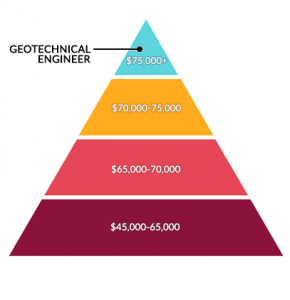3 Simple Techniques For Geotheta
3 Simple Techniques For Geotheta
Blog Article
Some Known Details About Geotheta
Table of ContentsA Biased View of GeothetaSee This Report on GeothetaIndicators on Geotheta You Need To KnowGetting The Geotheta To Work
They team up with civil designers, architectural designers, designers, and various other professionals to integrate geotechnical factors to consider into the general project style and building and construction procedure. This calls for reliable team effort, sychronisation, and communication to make sure that the geotechnical elements align with the job objectives and fulfill regulatory demands.Mining & Materials Engineering: Principles of drilling, penetration rates, and elements impacting the option of drilling technique. Qualities of nitroglycerins, shooting systems and blast patterns. Blasting methods in surface and underground workings. Special blowing up techniques at excavation perimeters. Vibration and sound control. Mechanical and constant methods to fragmentation, including longwall shearing and fullface boring.
Integrated evaluation of fragmentation and comminution procedures. Used by: Mining & Products Design.
Examine This Report on Geotheta
Bachelor's level programs in civil, geotechnical, geological, and ecological design commonly last four years and include basic education programs in English, social scientific research, and the liberal arts, along with courses in sophisticated maths, architectural geology, and fluid mineralogy. (https://www.provenexpert.com/geotheta/)
Geotechnical design involves the evaluation of the dirt and rock problems at a specific website, and their ramifications for the growth of that website. As most frameworks rely on the ground for assistance, it is without shock that a thorough understanding of the ground problems, and the suitability of structure systems, are important to the long-lasting security and efficiency of the structure or structure.
Specialising in the investigation of geological developments and ground practices, geotechnical engineers do scientific examinations and screening to recognize the impact these geological formations might have on the design and construction of structure, civil and facilities jobs. This expertise is critical for the design and building of buildings, roads, tunnels, dams, bridges, and water supply and sewage systems.
The geotechnical team at Douglas Partners routinely talk to engineers, layout designers, programmers, and contractors to make recommendations on design and development proposals to make certain that the built structures are suitably designed for the ground problems. For instance, the design of footing systems requires to take into consideration the weight of the framework, the ability of the ground to support that weight along with activity resistances and effective building and construction.
How Geotheta can Save You Time, Stress, and Money.
This job is considerably simplified by the use our Douglas Map geospatial platform that makes this info readily obtainable in a simple to make use of internet internet browser interface. A geotechnical designer will direct the exploration of boreholes and test pits to accumulate dirt and other examples, and likewise evaluate surface functions and ground direct visit this website exposures to form a geotechnical version of the subsurface problems.
Depending upon the task type and ground problems ran into, laboratory screening may to name a few points assess stamina, compressibility, sensitivity and/or leaks in the structure of soil and rock examples. After this information is accumulated and collated, the outcomes are used for a geotechnical design of the website, which is commonly presented as sections throughout the website.

A geotechnical examination by nature can just assess the ground problems at the areas drilled or dug deep into. All-natural variations in soil and rock problems can occur across a website and in between test locations. It is therefore great technique that the geotechnical designer be preserved throughout building of the task to supply on-site confirmation that the ground conditions encountered follow the expectations and advice provided in the geotechnical investigation record.
How Geotheta can Save You Time, Stress, and Money.
Geotechnical engineers use their thorough understanding of dirt and rock to evaluate threat and solve troubles on diverse framework projectsGeotechnical design is a specialist branch of civil design which considers the behavior of earth products and the application of soil and rock technicians. Geotechnical Engineers. As a geotechnical designer, you will assess the physical, mechanical and chemical properties of soil and rock in order to develop structures, keeping frameworks and earthworks
Geotechnical engineering is very closely connected to and overlaps with, both design geology and ground engineering - https://sketchfab.com/geotheta. It's possible to specialise in geotechnics or help a geotechnical company but be referred to as an engineering rock hound or a ground engineer. As a geotechnical engineer, you'll need to: construct and keep partnerships with customers and other experts involved in the site, throughout each projectmaintain security requirements on site be conscious of cost ramifications when you make recommendationsstudy geological maps and airborne photos from a variety of sources and from different time periodsexamine construction prepares to see just how feasible they are based upon your understanding of the siteinvestigate threats or geological dangers for the sitesearch for environmentally delicate features, such as garbage dump start to develop accurate and interpretive ground modelsplan area investigationsdrill and evaluate examples of bedrock, soil, groundwater and added products oversee other specialists on sitesolve technical concerns as they occur, such as unforeseen structures at drill sitesmonitor problems throughout and after building to ensure structures are steady in the short and long termadding information accumulated on site to your initial researchcreating geotechnical estimations, drawings, and two or three-dimensional computer system designs analyzing the datamaking suggestions about the suggested usage of the site

Report this page